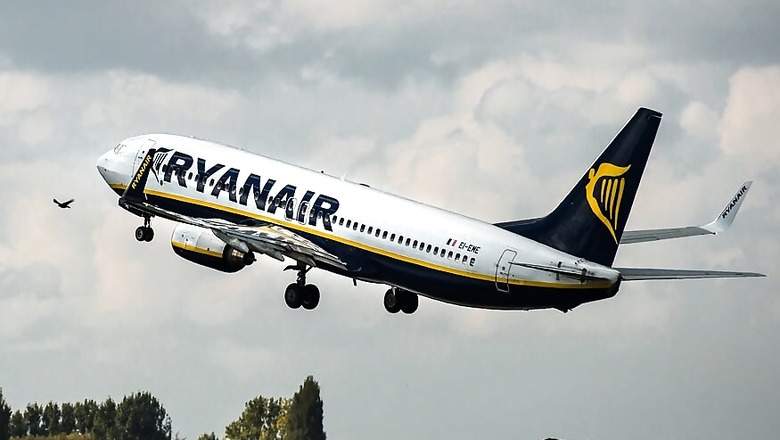
views
Ryanair has overtaken Lufthansa to become Europe's largest airline by passenger numbers, figures on Tuesday showed, allowing the Irish budget carrier to snatch the crown from the German rival for the first time.
The Lufthansa group -- which includes Austrian Airlines, Swiss, and low-cost Eurowings -- said in a statement it had carried a record 109.7 million passengers in 2016, up 1.8 percent on the year before.
But it was not enough to beat Ryanair, which last week announced a 15-percent jump in passenger numbers to 117 million.
While the German flag carrier remains ahead of its no-frills competitor in terms of revenue, "these numbers show that passengers are increasingly tempted by Ryanair's offer," Hamburg-based aviation expert Cord Schellenberg told AFP.
"This should be a wake-up call for Lufthansa," he added.
A Lufthansa spokesman however downplayed the significance of being relegated to second place by passenger numbers, saying it was "just one figure among many".
"We want to grow in a profitable way," he said.
But the battle for dominance in the skies is far from over.
Faced with stiff competition from low-cost carriers like Ryanair and EasyJet, Lufthansa has set out to strengthen its own budget subsidiary, Eurowings.
It reached a deal late last year to lease 33 aircraft from struggling Air Berlin that will be operated by Eurowings.
And last month Lufthansa announced it was taking full control of Brussels Airlines, which is set to be incorporated into Eurowings.
"Together, this should bring us another 11 to 12 million passengers annually," the Lufthansa spokesman said.
Ryanair for its part is keeping up the pressure, notably by adding new routes and bases in France, Germany and eastern Europe.
The Irish airline has particularly rattled Lufthansa with its plans to start flying from Frankfurt airport this year -- Lufthansa's home base.
"Ryanair will continue to improve the customer experience, and fares will continue to fall," spokesman Ronan O'Keeffe told AFP, adding that the group had set itself the goal of transporting "over 200 million customers a year" by 2024.



















Comments
0 comment